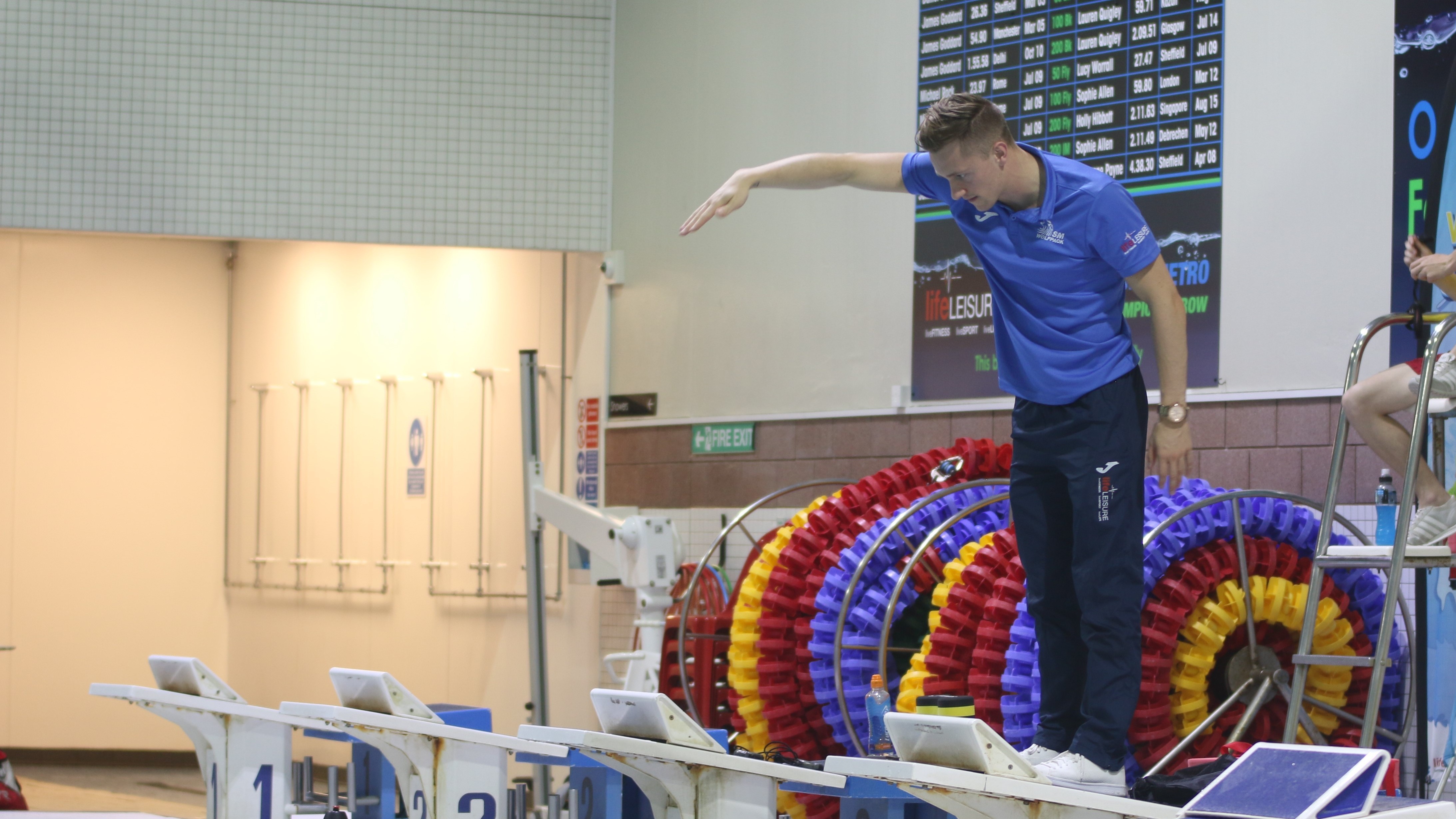Harry is a former champion swimmer who runs Life Leisure’s performance gym for the elite athletes and manages a Tri-Masters Swimming Programme.
Swimming is a fantastic exercise, it works all the muscle groups, doesn’t put any strain on your joints, and is a full cardiovascular workout – meaning your heart has to work hard to pump blood around your body. And that’s all while holding your breath!
Unfortunately, it relies on one very important thing – a swimming pool, which under current circumstances, very few of us have access to.
Just like any exercise, a prolonged break from the water will result in a loss of stamina, fitness and skill. We will also begin to lose our buoyancy in the water, making it harder to regain our confidence, efficiency and speed.
So, what can we do?
While we can’t replicate the resistance of water, we can mimic some of the movements our muscles make while swimming. This will not only help keep our bodies strong and our muscles lean, but help us dive in with confidence when we eventually get back to the pool.
Jump for joy
They are not as enjoyable as gliding through the water, but burpees are the closest you can get to replicate the full body workout you get from swimming.
Most swimming strokes will work all your major muscle groups at once, which means your heart is also working overtime to pump oxygen around your body.
A burpee – jumping between a plank, squat and explosive jump into the air – also does this, challenging your heart to move blood from your legs up to your arms in a short amount of time.
Tip: Your muscles will still benefit if you slow down the motions. Alternative options are to kneel down, step your legs back and forward individually, and stand up rather than jump.
Strong legs
Swimming requires strong legs as most strokes involve kicking to power your body through the water. The best way to stimulate these same muscle contractions on land is by running.
Running is a weight baring exercise, so not everyone can do it, but it is a great way to keep up your stamina and leg strength when you can’t get in the pool.
Tip: If running isn’t for you, try walking against a resistance such as a hill, or carry extra weight in a backpack.
Twist and shout
Swimming involves a lot of twisting, whether it’s to breathe as you are doing the front crawl, or turning around at the end of the lane, so it’s important that you do some movements that keep your oblique and abdominal muscles supple.
A great option is a squat jump with a half twist – that’s jumping up from a squat and rotating mid-air so your feet land in the opposite direct (or 90 degrees if you find this a little difficult).
Tip: If you find the jump a little difficult, try moving from a squat to a standing position, twisting 90 degrees as you stand, varying the directions.
Core stability
A good swimming technique relies on a strong core, which allows you to lengthen your body, keep high in the water and be efficient in the water.
It’s not a fun exercise, but the plank – where you hold yourself in a push up position and tense your core – is a great one for this.
Tip: You can improve it by alternating each arm in a swimming motion, or ease off the strain by doing it on your side, resting on your elbow, with your feet wider apart.
Front crawl
Front crawl relies on strong arms to power you through the water.
Working our arms can be hard without any specific equipment, so the easiest way to keep our strength up is by doing press ups, with our pectorals, arms and shoulders taking our body weight.
There are lots of alternatives for press ups so everyone should be able to find a technique that works. Try using your knees instead of your toes, or raise up your hands so they are higher than your feet. You could do push ups off a couch, a table, or even a wall, it’s all working the right muscles!
Tip: Tapping your shoulders in between each press ups will also recreate some of the movement in the pool.
Back to basics
Swimming engages all your back muscles, whether it’s arching through the butterfly or twisting through front crawl as you come up for breath.
A great land-based version is the back arch – lying on your stomach and raising your arms and legs at right angles, similar to a skydiver. Once here pulse up and down – this is a great way to work your glutes and back muscles.
Tip: This is also a great one for posture, especially those who are hunched over computers all day. By carrying out back arches you will reverse this muscle movement and encourage you to stand straighter!
Go for it!
These are great exercises for all swimmers, whether you race down the lanes or you enjoy a leisurely swim a couple of times a week.
A good guideline is for beginners to do around 30 seconds of each exercise with 30 seconds rest, intermediates should aim for 40 seconds on and 20 seconds rest, and those who are more advanced should do 50 seconds on and 10 second off before repeating a set.
Even with 24 hour access to a pool, elite swimmers still spend time in the gym, so think of these exercises as a natural accompaniment to improving your swimming technique and skill once you get back to doing what you love!
Click here to see Harry demonstrate these exercises or for more fitness tips.

